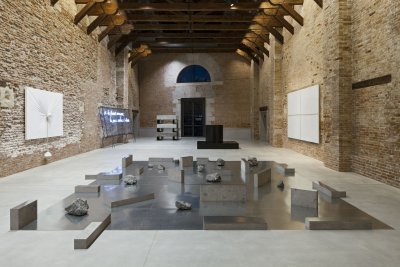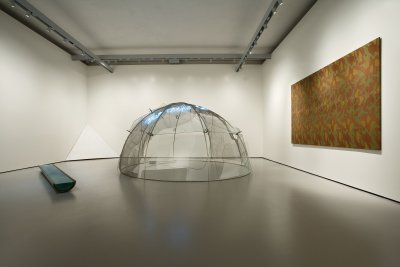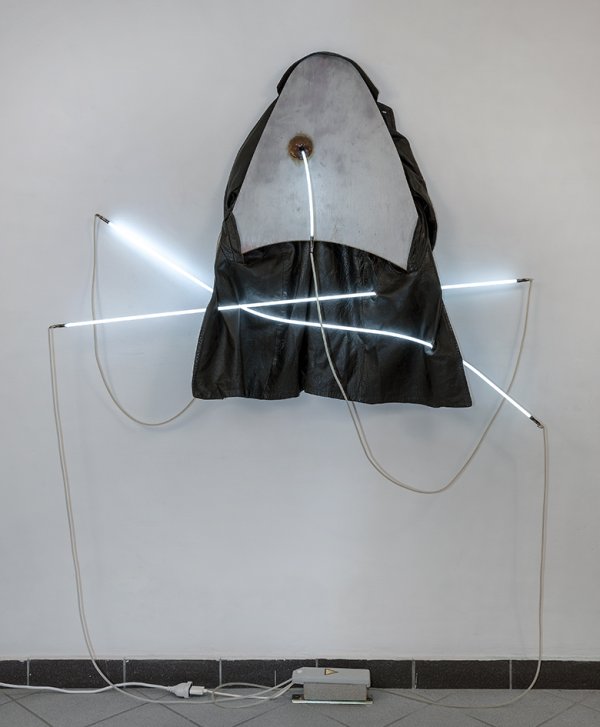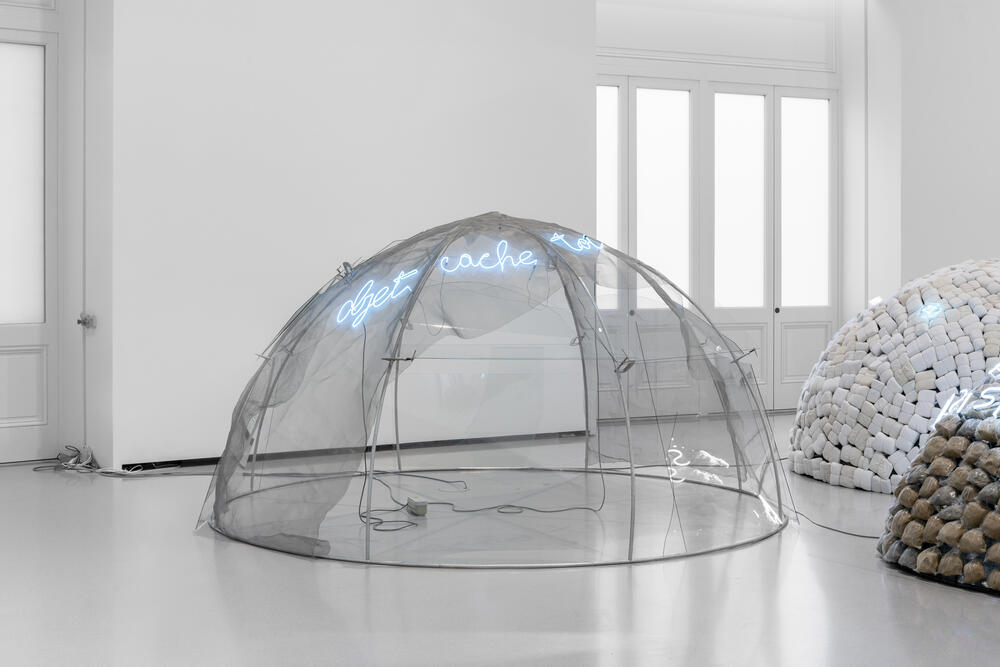Se la forma scompare, la sua radice è eterna
1982
Metallic tubing, wire netting and neon
178 x 452 x 25.4 cm (70 1/16 x 177 15/16 x 10 in.)
Thin neon tubes are fixed to a wire mesh screen and compose a sentence: “Se la forma scompare, la sua radice è eterna” (“if form vanishes, its root remains eternal”). The calligraphy is typical of Mario Merz: round, studious, almost childish.
The sentence is in fact a verse by 13th century Persian poet Jalal al-Din Rumi, a Sufi mystic who founded the Order of the Whirling Dervishes. By presenting it as a neon sign, Mario Merz turns it into an artistic program. Like other artists associated with the Arte Povera movement—a term coined by critic Germano Celant in 1967—Mario Merz seeks to represent the energy of matter and the transient character of the world in spite of its immutable principles.
Se la forma scompare, la sua radice è eterna was first shown in 2006 at the Where Are We Going? exhibition at Palazzo Grassi, in Venice.
The sentence is in fact a verse by 13th century Persian poet Jalal al-Din Rumi, a Sufi mystic who founded the Order of the Whirling Dervishes. By presenting it as a neon sign, Mario Merz turns it into an artistic program. Like other artists associated with the Arte Povera movement—a term coined by critic Germano Celant in 1967—Mario Merz seeks to represent the energy of matter and the transient character of the world in spite of its immutable principles.
Se la forma scompare, la sua radice è eterna was first shown in 2006 at the Where Are We Going? exhibition at Palazzo Grassi, in Venice.
Exhibitions
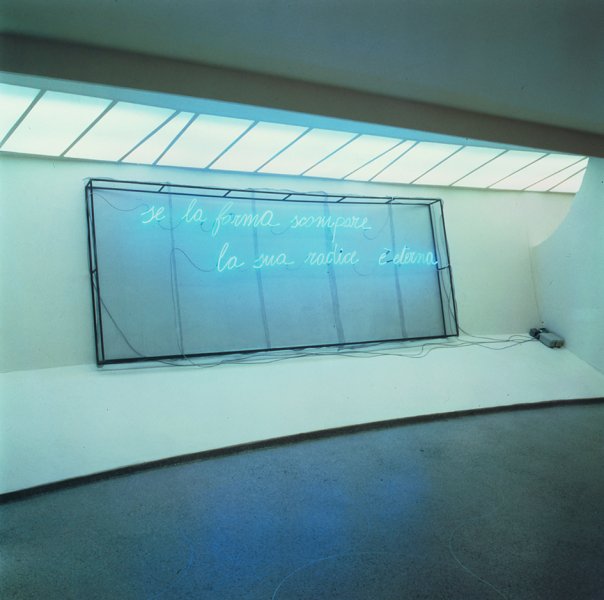
Mario MERZ © Adagp, Paris.
Courtesy Galleria Christian Stein, Milano
Former Collection of Mrs. Margherita Stein
